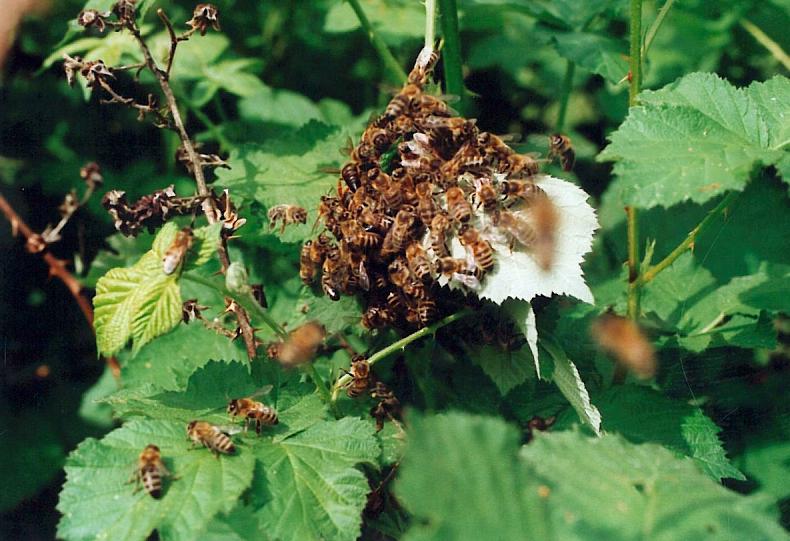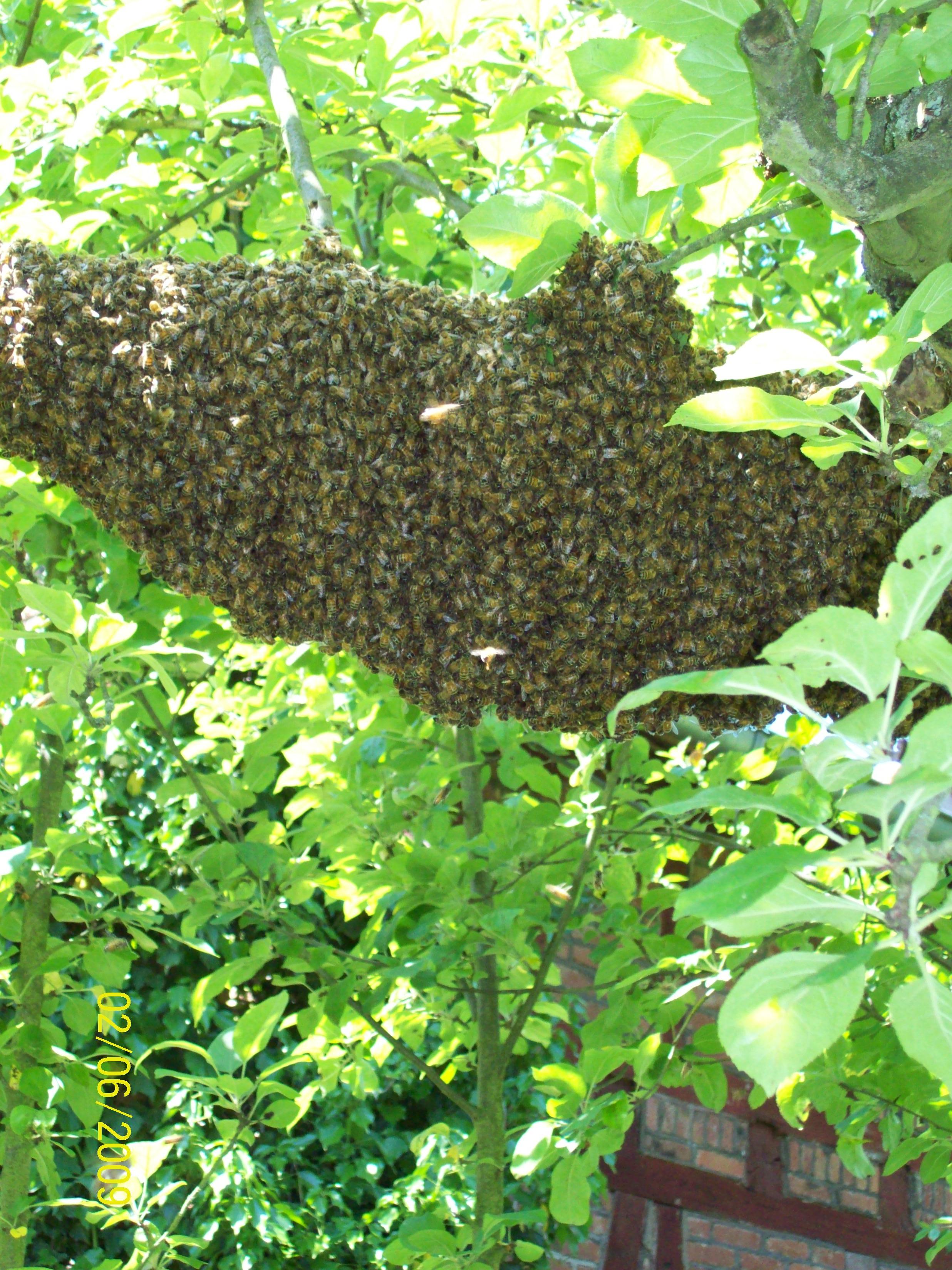
Centre For
Social Medicine And Natural Apitherapy
Centre for
Food Safety

Scientists
| engineers | gardeners | medical doctors | apitherapists | non-medical
practitioners | beekeepers of the
Centre
for Ecological Apiculture | Impressum
DI. Michael
Thiele, international coordinator of the Centre
For Food Safety
Genetically
Modified (GM) Foods Are Unhealthy And Unsafe
GM Soy And Allergies.
Bt Toxin Triggers Immune Response. Toxicity And Reproductive Problems.
A well known
pro-GM science author of the Frankfurter Allgemeine Zeitung (Natur &
Wissenschaft) Joachim Müller-Jung is getting somehow a bit nervous
as GM Foods are considered now unsafe and unhealthy. He is not really interested
in protection of human beings or nature; what he wants is business as usual
for regulatory bodies, biotech companies and organisations like ISAAA.
We are living now in 21st Century and human beings are free and able to
use their mind properly to look into the facts. This is a problem for Joachim
Müller-Jung: If people see that GM Food and GMOs are generally unsafe,
they don’t want to eat GM-soy, GM-avocados, GM-potatoes, GM-papayas, GM-rice,
GM-corn, GM-tomatoes. Thus he wants Biotech industry and regulatory bodies
to be protected so that they can carry on selling their unsafe products
without panic.*
But we don’t want
to join an issue on Joachim Müller-Jung but on Mr. Smith. Jeffrey
M. Smith is the executive director of the Institute for Responsible Technology.
His first book was Seeds of Deception . His newest book, Genetic Roulette
, was recently released by Yes! Books (www.geneticroulette.com ). Smith
is the producer of the video Hidden Dangers in Kids' Meals and writes an
internationally syndicated column Spilling the Beans . E-mail: info@seedsofdeception.com.
Jeffrey M. Smith just looked at the facts and concluded acurately: genetically
modified foods are unsafe. He recently wrote an article in a biotech magazine:
„Here is an article I wrote for the current issue of Genetic Engineering
News . This was certainly a controversial article for this biotech magazine
to publish. They are soliciting opinions on the article at
http://www.genengnews.com/blog/item.aspx?id=93 . In fact, some pro-GM advocates
are trying to out do each other in their condemnation of anything that
suggests GM foods are unhealthy. I encourage you to visit the site after
reading this article, to enter a more intelligent comment.
Genetically modified
(GM) foods are inherently unsafe, and current safety assessments are not
competent to protect us from or even identify most dangers. Overwhelming
evidence to support this conclusion is now compiled in the book Genetic
Roulette: The documented health risks of genetically engineered foods,
which presents an abundance of adverse findings and theoretical risks associated
with GM foods.1
The book documents
lab animals with damage to virtually every system studied; thousands of
sick, sterile, or dead livestock; and people around the world who have
traced toxic or allergic reactions to eating GM products, breathing GM
pollen, or touching GM crops at harvest. It also exposes many incorrect
assumptions that were used to support GM approvals. This article, excerpted
from the book Genetic Roulette: The documented health risks of genetically
engineered foods by Jeffrey M. Smith, summarizes some of the findings related
to allergic and immune responses.
GM Soy and Allergies
Soy allergies
jumped 50% in the U.K. just after GM soy was introduced.2 If GM soy was
the cause, it may be due to several things. The GM protein that makes Roundup
Ready Soy resistant to the herbicide does not have a history of safe use
in humans and may be an allergen. In fact, sections of its amino acid sequence
are identical to known allergens.3 A portion of the transgene from
ingested GM soybeans, along with the promoter that switches it on, transfers
into human gut bacteria during ingestion.4 The fact that the transformed
bacteria survives applications of Roundup's active ingredient, glyphosate,
suggests that the transgene continues to produce the Roundup Ready protein.
If true, then long after people stop eating GM soy they may be constantly
exposed to its potentially allergenic protein, which is being created within
their gut. (This protein may be made more allergenic due to misfolding,
attached molecular chains, or rearrangement of unstable transgenes, but
there is insufficient data to support or rule out these possibilities.1
) Studies suggest that the GM transformation process may have increased
natural allergens in soybeans. The level of one known allergen, trypsin
inhibitor, was 27% higher in raw GM soy varieties. More worrisome, it was
as much as sevenfold higher in cooked GM soy compared to cooked non-GM
soy.5 Not only is this higher amount potentially harmful, the finding also
suggests that the trypsin inhibitor in GM soy might be more heat stable
and, therefore, even more allergenic than the natural variety.6 It is also
possible that changes in GM soy DNA may produce new allergens. Although
there has never been an exhaustive analysis of the proteins or natural
products in GM soy, unpredicted changes in the DNA were discovered. A mutated
section of soy DNA was found near the transgene, which may contribute to
some unpredicted effects. Moreover, between this scrambled DNA and the
transgene is an extra transgene fragment, not discovered until years after
soy was on the market.7 The RNA produced is completely unexpected. It combines
material from all three sections: the full-length transgene, the transgene
fragment, and the mutated DNA sequence. This RNA is then further
processed into four different variations,8 which might lead to the production
of some unknown allergen. Another study verified that GM soybeans contain
an IgE-binding allergenic protein not found in nonGM soy controls, and
that one of eight subjects who showed a skin-prick allergic reaction to
GM soy had no reaction to nonGM soy.9 Although the sample size is small,
the implication that certain people react only to GM soy is huge. The increased
residue of Roundup herbicide in GM soy might contribute to increased allergies.10
In fact, the symptoms identified in the U.K. soy allergy study are among
those related to glyphosate exposure. The allergy study identified irritable
bowel syndrome, digestion problems, chronic fatigue, headaches, lethargy,
and skin complaints including acne and eczema.2 Symptoms of glyphosate
exposure include nausea, headaches, lethargy, skin rashes, and burning
or itchy skin.11 It is also possible that glyphosate's breakdown product,
AMPA, which accumulates in GM soybeans,12 ,13 might contribute to allergies.
Finally, mice fed GM soy had reduced levels of pancreatic enzymes.14 ,15
When protein-digesting enzymes are suppressed, proteins may last longer
in the gut, allowing more time for an allergic reaction to take place.
Any reduction in protein digestion could therefore promote allergic reactions
to a wide range of proteins, not just to the GM soy.
Bt Toxin Triggers
Immune Response
Bt toxin is consistently
associated with immune and allergic-type responses. Although the unpredicted
consequences of the GM transformation process might also contribute to
allergic reactions from Bt crops, evidence suggests that the Bt toxin itself
is a major factor. The Bt proteins found in most currently registered Bt-corn
varieties would not pass the allergy test protocol described in the 2001
FAO/WHO report,16 because they have amino acid sections identical with
known allergens17 and are too stable in simulated digestive solutions.18
,19 Furthermore, immune responses are triggered by both the natural Bt
toxin in spray form and Bt crops. The concentration of Bt toxin in crops,
however, can be thousands of times higher than in sprays;20 and changes
in its protein structure make the crop version more likely to provoke reactions
in humans.21 ,22 Additional evidence: When populations were exposed
to Bt spray, hundreds complained of allergic reactions; exposed farm workers
also exhibited antibody responses.23 -27
Indian farm workers
exposed to Bt cotton developed moderate or severe allergic reactions.28
Bt toxin fed to mice
induced a significant immune response and an increased reactivity to other
substances.29 -31
Male rats fed MON
863 Bt corn had a significant increase in three types of blood cells related
to the immune system: basophils, lymphocytes, and total white cell counts.32
Thousands of consumers
complained to food manufacturers about possible reactions to StarLink corn,33
and an expert panel determined that its Bt protein had a "medium likelihood"
of being a human allergen.34 The consistency between the reactions related
to Bt sprays and those reported by Bt-cotton workers is astounding. The
Bt spray was associated with sneezing, runny nose, watery eyes, skin inflammation
and irritation, rashes, itching and burning, swelling, red skin and eyes,
exacerbations of asthma, facial swelling, and fever. Some people required
hospitalization.23 ,24 Bt-cotton workers in India reported sneezing, runny
nose, watery eyes, skin eruptions, itching and burning, red skin and eyes,
facial swelling, and fever. Some people required hospitalization.28 The
two lists are nearly identical-only "exacerbations of asthma" was on the
spray list and not the other. Asthma and breathing difficulties were reported
by Filipinos who inhaled Bt-corn pollen.35 They also described swollen
faces, flu-like symptoms, fever, and sneezing. Some individuals in both
India and the Philippines also reported long-term effects after exposure.
The list of symptoms in the Philippines, however, did contain items not
reported by the other two groups. These included coughs, headache, stomach
ache, dizziness, diarrhea, vomiting, weakness, and numbness.36
Toxicity and Reproductive
Problems
In addition, there
is substantial evidence of toxicity and reproductive effects associated
with GM foods. Sheep that grazed on Bt-cotton plants in India, for example,
exhibited nasal discharge, reddish and erosive mouth lesions, cough, bloat,
diarrhea, and occasional red-colored urine. Shepherds report that 25% of
their herds died within 5-7 days. Post mortems on some of the estimated
10,000 dead sheep in the region indicated toxic reactions.37 Rats fed Bt
corn showed toxicity in their livers and kidneys.38 And farmers link Bt
corn with deaths among cows,39 water buffalo, horses, and chickens,36 as
well as sterility in thousands of pigs or cows.1 Animal feeding studies
with Roundup Ready soy indicated toxic livers,40 altered sperm cells,41
significant changes in embryo development,42 and a fivefold increase in
infant mortality, among others.43 Our understanding of DNA has progressed
rapidly since genetic engineering was applied to food crops, and many key
safety assumptions have been proven wrong. Perhaps some day scientists
will be able to safely and predictably alter
food crops for the benefit of mankind and the environment. Until then,
it is not responsible to risk the health of the entire population with
this infant science or to release these crops into the ecosystem where
they may self-propagate for generations. An immediate ban of GM foods and
crops is more than justified." **
__________________________________
*)
Frankfurter Allgemeine Zeitung, Nov 7 2007 (No. 259, p.N1)
**)Genetically
Modified Foods Unsafe? Evidence that Links GM Foods to Allergic Responses
by Jeffrey M. Smith, Genetic Engineering News, Nov 1 2007 (Vol. 27, No.
19) http://www.genengnews.com/articles/chitem.aspx?aid=2252
and Science Review Letters 2007, Vol. 6 #180
1 .
Smith, J.M. Genetic Roulette: The Documented Health Risks of Genetically
Engineered Foods (Yes! Books, Fairfield, IA, 2007).
2.
Townsend, M. Why soya is a hidden destroyer. Daily Express, Mar 12, 1999.
3.
Kleter, G.A. & Peijnenburg, A.A.C.M. Screening of transgenic proteins
expressed in transgenic food crops for the presence of short amino acid
sequences identical to potential, IgE-binding linear epitopes of allergens.
BMC Struct. Biol. 2 (2002): 8-19.
4.
Netherwood et al. Assessing the survival of transgenic plant DNA in the
human gastrointestinal tract. Nature Biotech. 22 (2004): 2.
5.
Padgette, S.R. et al. The composition of glyphosate-tolerant soybean seeds
is equivalent to that of conventional soybeans. J. of Nutrition 126, no.
4 (1996).
6.
Pusztai, A. & Bardocz, S. GMO in animal nutrition: potential benefits
and risks. Ch. 17, Biology of Nutrition in Growing Animals (Elsevier, 2005).
7.
Windels, P. et al. Characterisation of the roundup ready soybean insert.
Eur. Food Res. Technol. 213 (2001): 107-112.
8.
Rang, A. et al. Detection of RNA variants transcribed from the transgene
in roundup ready soybean. Eur. Food Res. Technol. 220 (2005): 438-443.
9.
Yum, H. et al. Genetically modified and wild soybeans: an immunologic comparison.
Allergy and Asthma Proceedings 26, no. 3 (May-Jun 2005): 210-216.
10.
Benbrook, C. Genetically engineered crops and pesticide use in the United
States: The First Nine Years. October 2004.
11.
Cox, C. Herbicide fact sheet: glyphosate. J. of Pest. Reform 24, no. 4
(Winter 2004).
12.
Duke, S.O. et al. Isoflavone, Glyphosate and aminomethylphosphonic acid
levels in seeds of glyphosate-treated, glyphosateresistant soybean. J.
Agric. Food Chem. 51 (2003): 340-344.
13.
Sandermann, H. Plant biotechnology: ecological case studies on herbicide
resistance. Trends in Plant Sci. 11, no. 7 (Jul 2006): 324-328.
14.
Malatesta, M. et al. Ultrastructural analysis of pancreatic acinar cells
from mice fed on genetically modified soybean. J. of Anat. 201, no. 5 (Nov
2002): 409.
15.
Malatesta, M. et al. Fine structural analyses of pancreatic acinar cell
nuclei from mice fed on GM soybean. Eur. J. Histochem. 47 (2003): 385-388.
16.
FAO/WHO. "Evaluation of allergenicity of genetically modified foods." (FAO/WHO,
Jan 22-25, 2001).
17.
Gendel. The use of amino acid sequence alignments to assess potential allergenicity
of proteins used in genetically modified foods. Advan. in Food and Nutrition
Research 42 (1998): 45-62.
18.
Noteborn, H.P.J.M. Assessment of the stability to digestion and bioavailability
of the LYS mutant Cry9C protein from Bacillus thuringiensis serovar tolworthi.
Unpublished study to EPA (AgrEvo, EPA MRID No. 447343-05, 1998).
19.
Engel, K. et al. Genetically modified foods: safety issues. American Chemical
Society Symposium Series 605 (Washington DC, 1995): 134-47.
20.
Mendelsohn, M. et al. Are Bt crops safe? Nature Biotech. 21, no. 9 (2003):
1003-1009.
21.
Dutton, A. et al. Uptake of Bt-toxin by herbivores feeding on transgenic
maize and consequences for the predator Chrysoperia carnea. Ecol. Entomology
27 (2002): 441-7.
22.
Romeis, J., Dutton, A., & Bigler, F. Bacillus thuringiensis toxin (Cry1Ab)
has no direct effect on larvae of the green lacewing Chrysoperla carnea
(Stephens) (Neuroptera: Chrysopidae). J. of Insect Phys. 50, no. 2-3 (2004):
175-183.
23.
Washington State Dept. of Health. "Report of health surveillance activities:
asian gypsy moth control program (Washington State Dept. of Health, Olympia,
WA, 1993).
24.
Green, M. et al. Public health implications of the microbial pesticide
Bacillus thuringiensis: an epidemiological study, Oregon, 1985-86. Amer.
J. Public Health 80, no. 7 (1990): 848-852.
25.
Noble, M.A., Riben, P.D., & Cook, G.J. Microbiological and epidemiological
surveillance program to monitor the health effects of Foray 48B BTK spray
(Ministry of Forests, Vancouver, B.C., Sept 30, 1992).
26.
Swadener, C. Bacillus thuringiensis. J. of Pest. Reform 14, no. 3 (Fall
1994).
27.
Samples, J.R. & Buettner, H. Ocular infection caused by a biological
insecticide. J. Infectious Dis. 148, no. 3 (1983): 614.
28.
Gupta, A. et al. "Impact of Bt cotton on farmers' health (in Barwani and
Dhar district of Madhya Pradesh)" (Investigation Report, Oct-Dec 2005).
29.
Vazquez et al. Intragastric and Intraperitoneal Administration of Cry1Ac
protoxin from Bacillus thuringiensis induces systemic and mucosal antibody
responses in mice. Life Sci. 64, no. 21 (1999): 1897-1912.
30.
Vazquez et al. Characterization of the mucosal and systemic immune response
induced by Cry1Ac protein from Bacillus thuringiensis HD 73 in mice. Brazilian
J. of Med. and Biol. Research 33 (2000): 147-155.
31.
Vazquez et al. Bacillus thuringiensis Cry1Ac protoxin is a potent systemic
and mucosal adjuvant. Scandanavian J. of Immunology 49 (1999): 578-584.
32.
Burns, J.M. 13-week dietary subchronic comparison study with MON 863 corn
in rats preceded by a 1-week baseline food consumption determination with
PMI certified rodent diet #5002. (Monsanto Co. report, Dec 17, 2002).
33.
Freese, B. The StarLink affair. Submission by Friends of the Earth to the
FIFRA scientific advisory panel considering assessment of additional scientific
information concerning StarLink corn (Jul 17-19, 2001).
34.
Assessment of additional scientific information concerning StarLink corn
(FIFRA scientific advisory panel report, No. 2001-09, Jul 2001).
35.
Smith, J.M. Bt-maize (corn) during pollination, may trigger disease in
people living near the cornfield (Press release, Feb 2004).
36.
Ho, M. GM ban long overdue, dozens ill & five deaths in the Philippines
(ISIS press release, Jun 2, 2006).
37.
Mortality in sheep flocks after grazing on Bt cotton fields-Warangal district
(Andhra Pradesh report of the preliminary assessment, Apr 2006).
38.
Seralini, G., Cellier, D., & Spiroux de Vendomois, J. New analysis
of a rat feeding study with a genetically modified maize reveals signs
of hepatorenal toxicity. J. archives of Env. Contam. and Toxicology (Springer,
New York).
39.
Strodthoff, H. & Then, C. Is GM maize responsible for deaths of cows
in Hesse? Greenpeace e.V. 22745 (Greenpeace, Hamburg, Germany, Dec 2003).
40.
Malatesta, M. et al. Ultrastructural morphometrical and immunocytochemical
analyses of hepatocyte nuclei from mice fed on genetically modified soybean.
Cell Struct. Funct. 27 (2002): 173-180.
41.
Vecchio, L. et al. Ultrastructural analysis of testes from mice fed on
genetically modified soybean. Eur. J. of Histochem. 48, no. 4 (Oct-Dec
2004):449-454.
42.
Oliveri et al. Temporary depression of transcription in mouse pre-implantion
embryos from mice fed on genetically modified soybean. (48th Symposium
of the Society for Histochemistry, Lake Maggiore, Italy, Sept 7-10, 2006).
43.
Ermakova, I. Genetically modified soy leads to the decrease of weight and
high mortality of rat pups of the first generation. Preliminary studies.
Ecosinform 1 (2006): 4-9.
Further
reading and references:
Online-Magazines:recently
published scientific research and practical advices on this topic can be
found in the quarterly magazine Apiculture
and Supplement Apicultural
Review Letters
as
well as in Natural Science and
Science
Review Letters
Genetically
Modified Seeds Cause More Harm Than Good I-VI. More...
Cancer
Caused By GMO's. More...
Genetically
Engineered Plants Or Animals In Landscape - Who Is Responsible For It,
Like Authorities Who Release The Rules, Can Be Taken To Court For It
Monsanto
And The GM-Crop Disaster
Biosafety?
Unscientific Assumptions The Basis Of Approvals? - Blatant Propaganda Exercise
Stands Validated As Exemplary Science - Toxic Genetically Engineered Foods
Could Have Been Approved.
Genetically
Modified Foods And Seeds Are Unhealthy And Unsafe - Evidence Links GM Foods
To Allergies
Green
Biotechnology And Red Biotechnology In The Retreat
On
The Risks Of Agro-Biotechnology I-V - Negative Side Effects Of Genetically
Modified Crops On Honeybees
"Genetic
Engineering - Wrong In The Premises?"




Sign
up for bee-therapy | Beauty-cure
| Anti-aging
| Infertility
| Cancer
of the breast | Hashimoto-Thyreoiditis
|
Crohn's disease
Rheumatism
| Juvenile idiopathic
arthritis | Heart
diseases | Arteriosklerosis
| MS |
Diabetes
| Neurodermitis
| Obesity |
Depression
and Psychosis
Allergies
| Alzheimer
/ Parkinson | Diseases
of the kidneys | Pancreas
| how
to improve fitness of the body
Propolis
| Beeswax | Royal
Jelly | Organic Honey
| Comb in the Comb
| Raw Honey | Organic
Beekeeping Basic Course
Expertise
| Courses | Home
| Research | Save
Beecolonies-Bienenpatenschaft | Certification
| Training
Apitherapy
Api
Review Letters / Science Review Letters
Akademie
der Kunst und Philosophie / Academy of Arts and Philosophy
Save
the Bees, Bumblebees and Beecolonies
Zentrum
fuer wesensgemaesse Bienenhaltung
Centre
for Ecological Apiculture
Forschungszentrum
Bienentherapie / Natural Apitherapy Research Centre
Beetherapy
/ Academy of Sciences
DI.
M. Thiele, President and international Coordinator
Copyright:
Centre for Food Safety

